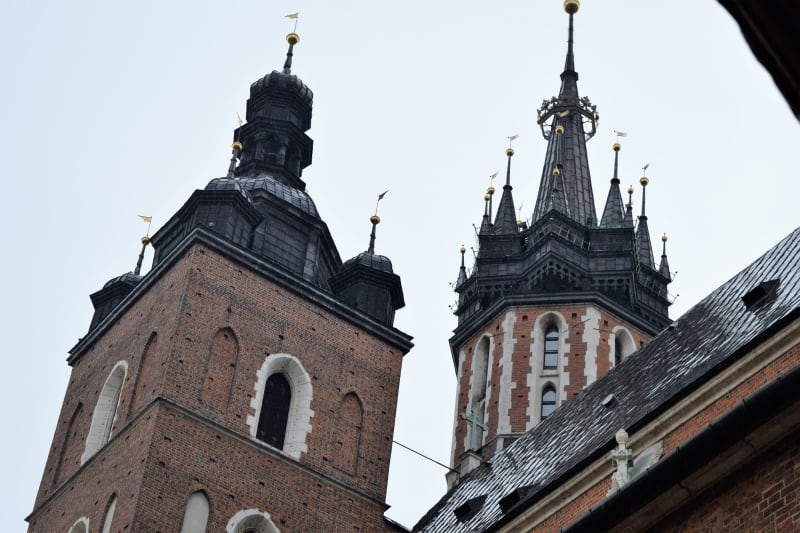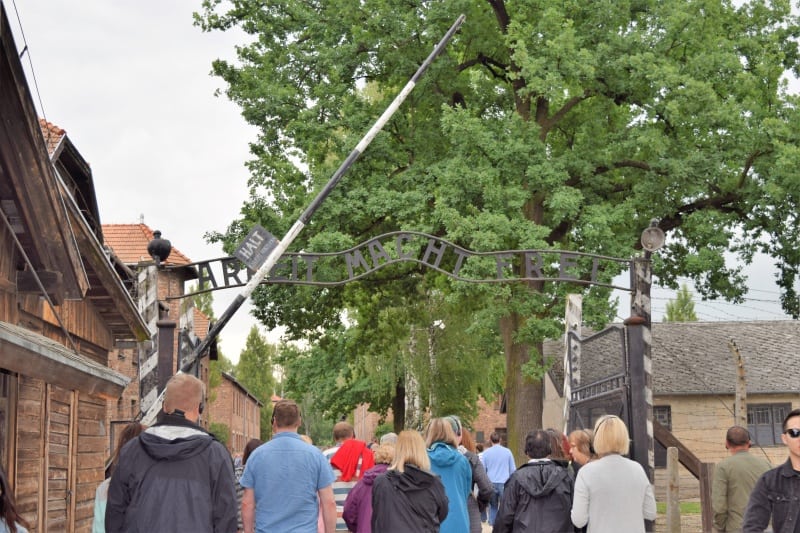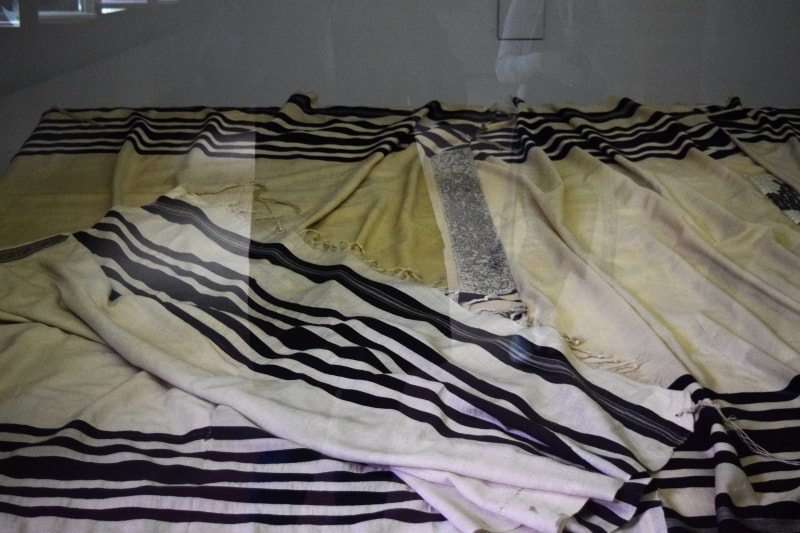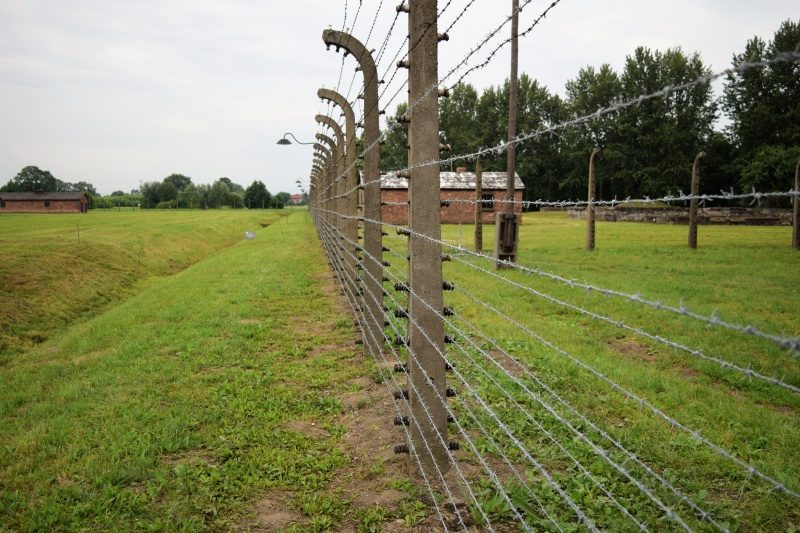Our study of the European Theater of World War II would not have been complete without visiting some of the sites of the most terrifying displays of human depravity, the Nazi concentration camps. We stopped in Krakow, Poland to see one of the most notorious of those camps, the Auschwitz-Birkenau camp.
Before venturing outside of Krakow for that tour, we took some time to enjoy the city first. Dating as far back as the 7th century, Krakow is one of Poland’s oldest cities. Our Airbnb apartment was in a quaint area not far from Old Town.


So, we wandered around the neighborhood and enjoyed the medieval architecture.

We also enjoyed some Polish street food.
Roasted polish sausage…
 …from what looks like the original food truck.
…from what looks like the original food truck.
 Pierogis, polish dumplings
Pierogis, polish dumplings
 Borscht, which is a soup made from beets and cabbage.
Borscht, which is a soup made from beets and cabbage.

It’s difficult for me to put into words, the rest of our stay in Krakow which included a tour of Schindler’s factory (made famous in the Steven Spielberg movie, Schindler’s List), the Auschwitz labor camp and Birkenau death camp. The solemnity of the place hung heavy in the air like a thick sorrowful shroud.

This was the gate of Auschwitz.
 The metal sign reads, “Arbeit Macht Frei.” Work sets you free. Most of those who were imprisoned at Auschwitz were worked to death.
The metal sign reads, “Arbeit Macht Frei.” Work sets you free. Most of those who were imprisoned at Auschwitz were worked to death.
We viewed a room that held items confiscated from prisoners as they arrived at the camp. There were piles of prayer shawls, shoes, brushes, clothes, suitcases…
 In one room, there was a display of human hair that had been cut from the heads of prisoners. You could see full braids in the mountain of hair that towered to the ceiling. We were not permitted to take pictures in this room. The sight was hideous and I sensed a feeling of dread in my heart as I walked through. It seemed like something terrible had taken up residence in that place and lingered there. Our guide told us that because natural resources had become scarce in Germany, the Nazis repurposed and reused items seized from prisoners. They used human hair to produce winter clothing like hats, coats and blankets. A bolt of felt was on display that was produced from human hair. You could see hair protruding from the edges of the fabric.
In one room, there was a display of human hair that had been cut from the heads of prisoners. You could see full braids in the mountain of hair that towered to the ceiling. We were not permitted to take pictures in this room. The sight was hideous and I sensed a feeling of dread in my heart as I walked through. It seemed like something terrible had taken up residence in that place and lingered there. Our guide told us that because natural resources had become scarce in Germany, the Nazis repurposed and reused items seized from prisoners. They used human hair to produce winter clothing like hats, coats and blankets. A bolt of felt was on display that was produced from human hair. You could see hair protruding from the edges of the fabric.
 Cremation ovens
Cremation ovens


Nearby was the Birkenau death camp. The distinctive German efficiency was evident here as the railroad tracks run directly to the gas chambers. People were transported here on cattle cars and literally led to slaughter by the thousands.


I cannot comprehend how the average person could rationalize and justify the crimes committed against humanity here. It’s easy to condemn those who affirmatively participated, but what about those who stood idly by? I told Benjy that if I lived during that time, I would rather die than have on my conscience the reality of standing by and doing nothing as millions were brutally slaughtered. But that’s easy for me to say now. To a large extent, it’s likely that I am willfully blind to the injustice and suffering currently going on around me.
Lord, open my eyes, soften my heart and show me what I can do to ease others’ suffering. Forgive me when I fail to help those around me. Give me the courage to speak up and act in the face of injustice.

A very poignant tell of that place, Tala. I too, when reading or watching stories about those death camps literally cannot comprehend what all those poor souls when thru. Thanks for your time. Tim